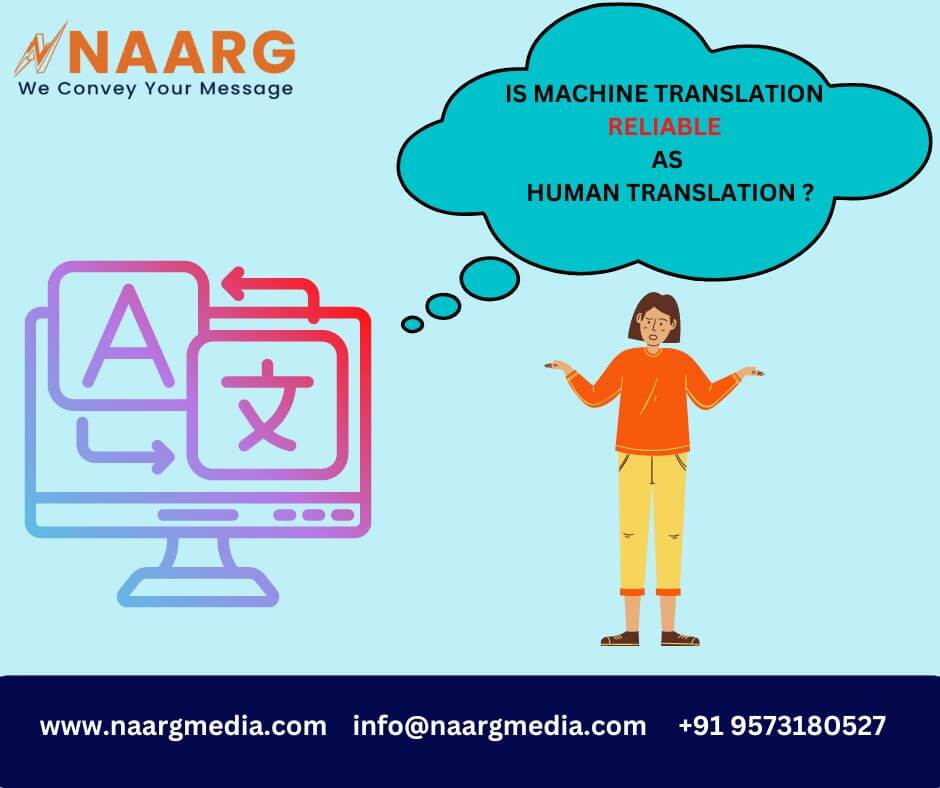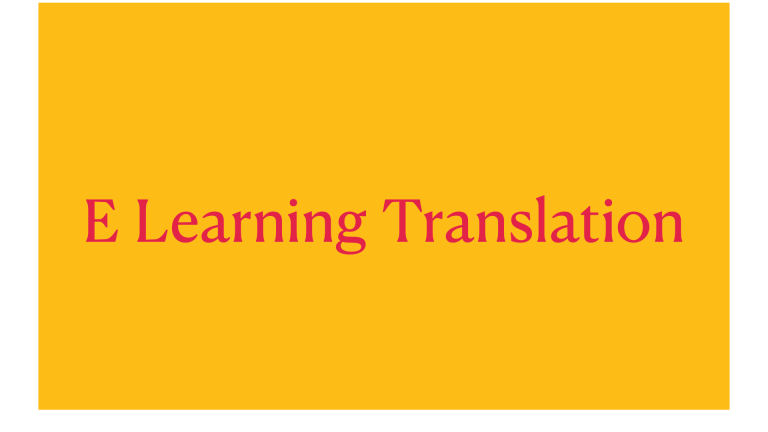A key component of communication that enables global connections is translation. The translation process involves more than just changing the words; it also involves characterizing and analyzing the sentences or words that result in the output and showing how those words affect the emotions of others. This allows consumers to work more quickly.
Machine translation service providers are aware that a growing number of organizations need a significant amount of content translated to serve customers. The market for machine translation is expanding day by day. Machine translation is reportedly employed in the fields of education, economics, healthcare, and law. Currently, the well-known options for these tasks are Google Translator, IBM Watson Language Translator, Bing Translate, Amazon Translate.

What is the translation by machine?
Without the aid of a human, machine translation (MT) uses translation tools to mechanically convert one language to another. Simple translation which is used to convey the original language’s meaning in the target language is not the same as modern machine translation.
One of the few uses that appeared after the development of computing power in the 1950s is translation. At the time, the task required a significant amount of processing power and storage due to its high level of complexity.
Software and hardware were able to perform simple machine translation in the 2000s. Statistical databases were initially employed to train computers to translate text. In the event of a new language, it is very challenging to create the database and train such modules.
To test artificial intelligence and neural learning translation models for training and working of translation engines, Google established an experimental team in 2016. The core machine translation engine at Google is the fastest available. The translation quality is constantly improving as a result.
The deep learning approach, which underpins neural machine translation, is so potent that Google changed its strategy and adopted it as its fundamental model for software development. It has since been incorporated into translation technologies after Microsoft and Amazon did the same. As a result of the demand, translation and localization management companies now include machine translation capabilities in their platforms.
On 19 December 2022 Google confirmed that they are going to invest USD 1 Million in IIT Madras to study bias AI that supports enhancing better output in Google translate.
How does machine translation work?
Google Translate and other programmes that offer automated translation in numerous languages. Many people are unaware of the automated process used to perform this translation. The 1954 Georgetown IBM Experiment, the first demonstration of machine translation, caught the attention of the world. In this experiment, computers perform translation of language pair English and Russian and translate roughly 60 words from one to the other.
As machine translation has matured, it is now employed in everyday life by professionals and layman because it provides accurate translations of the source language. In plain English, machine translation is a software program that enters a text into a computer algorithm, which then automatically and without human involvement translates it into another language. Professional translators are now frequently used by language service providers to compose and revise information to conform to human standards.
Machine translation depends on rules, and linguists and programmers create rules-based machine translation software with dictionaries, grammar rules, and linguistic rules that executes and produces precise results. This library is updated regularly to improve its quality. Another type of machine translation is statistical machine translation, in which the system refers to previously translated material and employs a computer algorithm to explore several options while translating the source language to the target language.
Another form is neural networks, which employ artificial intelligence for translation and are used by many leading businesses, including Microsoft, DeepL, and Google Translate. Although it appears purely difficult, the outcomes are effective.
Types of machine translation
1) Rule-based machine translation (RBMTs):
At first, machine translation was based on rules. For language translation, RBMT relies on grammatical rules. The grammatical study of the two source languages is the basis for translation. RBMT is worth it in basic situations where an understanding of meaning is required. Due to the manual insertion of languages and human post-editing, it has some limitations. However, the dependency on productivity did not increase right away.
2) Statistical Machine Translation (SMT):
Based on words, phrases, and sentences in text, SMT creates a statistical model. The process of transforming one language into components of another applies to that model. The biggest drawback is that because it does not account for context, the translation may always be inaccurate, so we cannot expect higher translation quality. Nevertheless, it is excellent for basic translation.
3) Neural Machine Translation (NMT):
Neural Machine Translation uses artificial intelligence to learn different languages. Additionally, information is continually expanding. NMT is accurate and makes adding more languages simple and quick.
4) Hybrid Machine Translation (HMT):
HMT combines statistical and rule-based machine translation. To increase quality, translation memory is used.
What Are the Benefits of Machine Translation?
1) Volume and speed:
Machine translation is extremely quick.When you need to translate large amounts of data quickly like real-time chats or large scale legal cases for example in cross border litigation cases millions of words to be translated within a week for document scanning in such cases it is difficult for humans to translate in a short time.
2) Language Choice:
Many machine translation service providers offer translations into more than 100 languages, which is beneficial for reaching a target market globally with documentation, goods, and services.
3) Economical:
Because machine translation requires less human input, it offers the best translation at a lower price and in less time. As a result, production rises, and products can reach the market more quickly because of the shortened delivery time. For instance, you can integrate content management with machine translation for high-volume projects to automatically organize the content before translating it into several languages.
4) Automated incorporation into translation workflows:
A lot of translation management systems incorporate one or more machine translations into their processes. In this procedure, the translation is carried out mechanically with the help of automated translation systems.
Drawbacks Of Machine Translation:
1) Correctness Of Material:
Any documents related to product guide, legal documents, medical documents, books, company proposals and each translation need to be accurate but in machine translation accuracy varies from case to case basis, some forms of content yield only 20% accuracy and some forms of content which is short and easy will yield 50% accurate translation.
To assure accuracy LSPs get Machine translation edited by expert linguists and delivered to clients. It takes twice the time in rectifying MT output and sometimes it is not top-notch.
2) Poor Quality:
Major drawback of machine translation is that translated text has poor quality and is not up to standards. Sometimes machine translation is unable to put text in proper context. Human translation is more accurate in solving cultural references, colloquialism and language terminology.
3) Conciseness of Content:
Concise content is content which gives more information in a short time. Machine translation dissolves the content using alternate words for each word in source language which can lengthen the content but readers can lose their attention from the main purpose.
Reach us at info@naargmedia.com to know more about our services.

